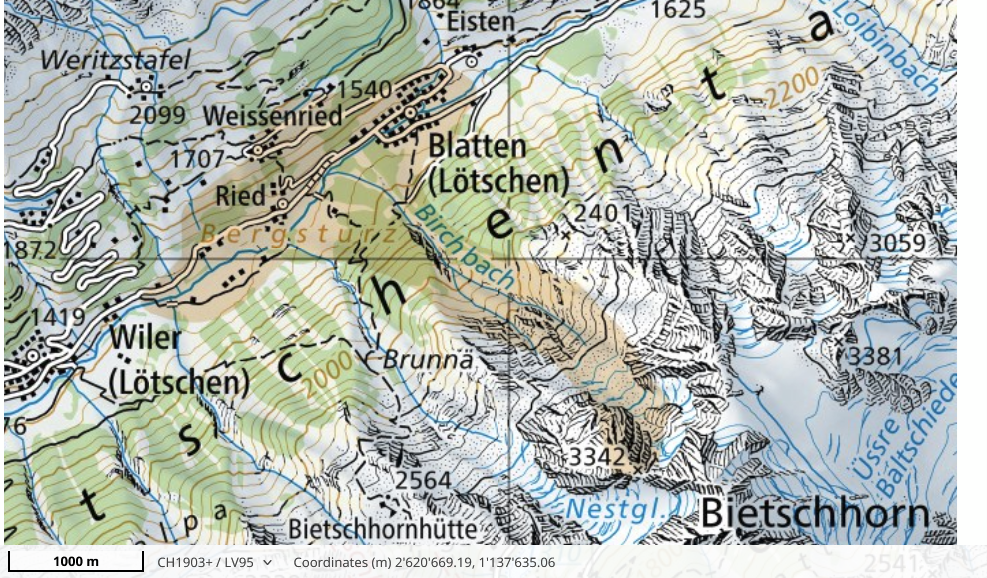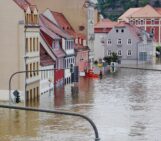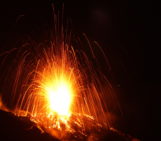
In the morning of May 28, 2025, the picturesque Swiss alpine village of Blatten sat quiet and serene in the Lötschen Valley. Exceptionally quiet, in fact, as the village was evacuated on May 19th after a local Natural Hazards expert spotted a worrisome change in a local mountain looming about the village, the Kleines Nesthorn: it was collapsing faster.
The Kleines Nesthorn is a 3,341-meter peak with a known instability between rock layers that has caused the mountain to shift a few centimetres a year and has been continuously monitored. But the movements ramped up in May and caused a series of worsening rock avalanches onto the Birch glacier below. Later that day, on May 28, 9 million tonnes of Kleines Nesthorn sat on Birch glacier, and it was simply too much. Birch glacier collapsed, causing a massive landslide that buried Blatten, causing an event that has captured worldwide media attention. Although most of the village was safely evacuated, the evacuation of the inhabitants was nevertheless relatively sudden, and the inhabitants had to leave everything behind. One person disappeared during the event.
The cascade of events resulted in the damming of the main river, the Lonza River, whose last discharge recording was 4.7 m3/s before the Blatten station was destroyed. The lake that formed submerged most of the houses that were not previously buried, and it took several days until the river found its way across the landslide, so far without major mudslides. The entire region (the landslide and the mountain peak) is still unstable and cannot be accessed. To prevent downstream flooding as much as possible, the water level of the downstream hydropower dam, Ferden (1.7 mio m3 volume) was significantly lowered.

Map showing the landslide in brown, Source: SwissTopo via geoadmin.ch
This exceptional event triggers a wide range of scientific questions about the driving processes, the link to climate change and permafrost thawing, the in-situ and space-born monitoring of such hazard sites, the real-time forecasting, warning and evacuation processes, and also questions about risk perception and the cultural value of continuing to inhabit remote locations that are at risk.
To get further insights into this event, we contacted Christophe Lambiel from the University of Lausanne. Christophe is a geomorphologist whose research focuses on mountain permafrost and related processes, its detection, mapping, and modelling of its spatial distribution, as well as the study of slope movements within the alpine periglacial belt, particularly rock glaciers. He knows the region well and was on the site after the event.
Questions for Christophe Lambiel:
Q: What was the first thing you thought when you saw what finally happened in Blatten?
I was stunned, like everyone else, I think. I had been following the evolution of this crisis from the beginning. I expected a sudden collapse of the Kleines Nesthorn, which fortunately did not happen. Then I thought that the glacier would, in turn, be gradually destroyed through ice avalanches. I had not imagined that it could break apart all at once.
Q: Can you explain in a few words what happened in Blatten and what triggered the event?
What happened at Blatten is a highly complex phenomenon, involving the slide of a mountain, followed by a succession of rock avalanches on a glacier that eventually broke up, creating a cascading event.
The Kleines Nesthorn was known to move a few centimetres a year. Around 13 May, the movements accelerated sharply, by several metres a day, leading to the immediate evacuation of Blatten. The worst-case scenario of a total collapse of the mountain was seriously considered. In the end, however, the mountain partly disintegrated in a series of rock falls. The fear then shifted to the glacier, which found itself under 9 million tonnes of debris. Under the weight of the debris, the glacier accelerated sharply, causing ice avalanches at the front of the glacier. At that time, it was expected that the glacier would gradually disintegrate, as was the case with the Kleines Nesthorn, but on 28 May, almost the entire glacier broke up, triggering this gigantic avalanche of debris, ice and water.
Q: To what extent can the event be directly attributed to permafrost thawing and climate change?
This question is on everyone’s lips, and as scientists, we must be very careful with our answers. For me, we need to distinguish between two points: the initial movement of the Kleines Nesthorn and the succession of rock falls over the last 20 years, which have accumulated a large quantity of debris on the Birchgletscher.
The main cause of the slide on the Kleines Nesthorn is linked with the geological structure, with a slide plane that passes through the contact between the gneisses and amphibolites of the Kleines Nesthorn and the granites of the Bietschhorn. It’s too early to say why the movement suddenly accelerated so sharply on 13 May, but I don’t think we can totally rule out the role of deep permafrost degradation.
The increase in rock falls above the Birchgletscher can probably be explained by 1) the disappearance of the ice apron from the north face of the Kleines Nesthorn, which has fragilized the rock surface by exposing it to warm air temperature, rain, and freeze-thaw cycles, and 2) by the degradation of the permafrost in the rock walls, which consists in ground warming and partial melt of ice-filled cracks, allowing water penetration deep into the ground and consecutive increase in hydrostatic pressure, which in turn fragilize the rock slope. The gradual covering of the glacier by debris protected it from warming and may have influenced the ice flow mechanisms in some way, causing the glacier to move about 60 metres downstream.
Q: Has there been a significant increase in this kind of event in the European Alps, or are we just more aware of them?
There has been a clear increase in rock falls in the high mountains as a result of the degradation of the permafrost and the disappearance of ice aprons. However, as the study by Jacquemart et al. (2024) shows, the increase in rock avalanches in the high mountains is not significant, as these events remain rare. However, an increase can be expected in the coming years.
Q: What are the questions that remain open regarding this event? How can geosciences contribute to a better understanding of similar events?
Why did the Kleines Nesthorn start moving so abruptly in mid-May? How did permafrost and its degradation play a role in the preparatory phase of this event? Why has the glacier front advanced over the last ten years? What mechanisms led to the glacier breaking apart? How did the avalanche spread through the valley? These are the kinds of questions that are now being asked. We must now gather all available data to try to understand the chain of events that led to this disaster. This will require a collective effort involving geologists, glaciologists, geomorphologists and hydrologists, as well as people from the cantonal service and private offices that have constantly monitored the development of the crisis since its onset.
Q: Given the complexity and scale of the Blatten event, what are the key lessons for risk mitigation in alpine environments? How can we improve long-term preparedness and real-time response in such multi-hazard situations?
On the one hand, this involves conducting a systematic study across the Alps of potentially unstable rock slopes, particularly those located above glaciers. Three of the most recent major events in Switzerland, at Piz Cengalo, Piz Scerscen and Kleines Nesthorn, involved rockfalls or rock avalanches onto a glacier, triggering cascading events.
Secondly, it is necessary to ensure careful and regular monitoring of areas identified as unstable, using both monitoring techniques (webcams, permanent GPS, satellite imagery, etc.) and field observers. In the case of Blatten, the first alert was raised by the local natural hazard observer!
Concluding remark by the editors
We are extremely grateful to Christophe for having taken the time to answer our questions.
The Blatten landslide event can serve as a reminder of how earth processes, driven by geological, geomorphological, hydrological and/or climate factors, can develop into sudden, cascading events. This time, the tragedy was averted due to the local observation, expert knowledge and real-time monitoring, underlining the role of early warning systems. This event also highlights the importance of enhancing our understanding of the interplay between warming temperatures, ice, and rock in alpine environments to improve risk assessment and long-term adaptation strategies in mountain regions.
Edited by Asimina Voskaki (Natural Hazards Blog), Emma Lodes (Geomorphology Blog) and Bettina Schaefli (Hydrology Blog)
Further reading: fact sheet from ETHZ




